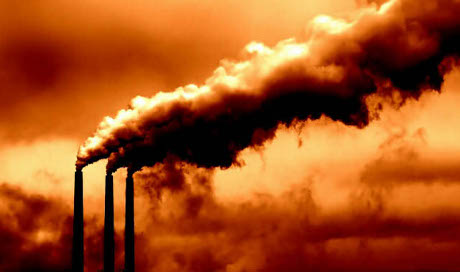
With gasoline prices sky-high and climate policy low on the public agenda, you may we wondering why coal has such a singular place in the two presidential candidates' contrasting energy platforms. (Coal, after all, has little or no bearing on automotive fuel prices but enormous relevance to greenhouse gas reduction.) Let's go, as they say in sports-casting, to the videotape.
A week ago, the Department of Energy's Energy Information Administration (EIA) released its quarterly coal report, highlighting dramatic trends in U.S. coal production, consumption, and exports. Coal production was 9.4 percent lower than the previous quarter and 8.7 percent lower than in the second quarter of 2011. U.S. coal consumption was 16.3 percent below what it was during the same quarter a year ago.
Second quarter U.S. coal exports, on the other hand, were 31.1 percent higher than in the first quarter and 39.1 percent higher than in the second quarter of 2011. Without that increase, U.S. production in the second quarter would have been 19.9 percent lower than in 2011/II, rather than 9.4 percent lower. So it is easy to see how dependent the coal industry is on Federal policy.
Production is down, to be sure, partly because natural gas is so plentiful and cheap--that is to say, essentially because of market forces. But its contraction also is a result in significant measure of the Obama's strict air pollution policies, which have made it much more expensive to operate and maintain older coal plants, and because of expectations that future carbon-reduction policies will make coal even more unattractive.
Exports may be equally dependent on Federal policy. Will the next president go all-out to see that infrastructure gets put in place to facilitate future coal exports? What if, to take an improbable but not impossible scenario, a president decided to actually discourage coal exports, on the ground that is bad for the global climate to burn coal anywhere?
Taking all such considerations into account, it's obvious why coal money has been pouring into the coffers of the Romney campaign, and why highways in the coal-rich regions of western Pennsylvania, West Virginia and eastern Ohio are lined with billboards trumpeting the benefits of "clean coal." Turn on a television or radio just about everywhere and tune to PBS or NPR, and you won't likely make it through an hour without hearing a message boosting coal.
In northwest Washington, residents are bitterly divided over a proposed coal export terminal to be built at Cherry Point (photo). Native American leaders have joined with environmentalists and green-minded politicians in opposition to the facility, which they believe would be inimical to fishing rights and sacred sites. In Wyoming, the likely source of any coal exported from a future terminal at Cherry Point, production was down 16.8 percent in the second quarter of this year.